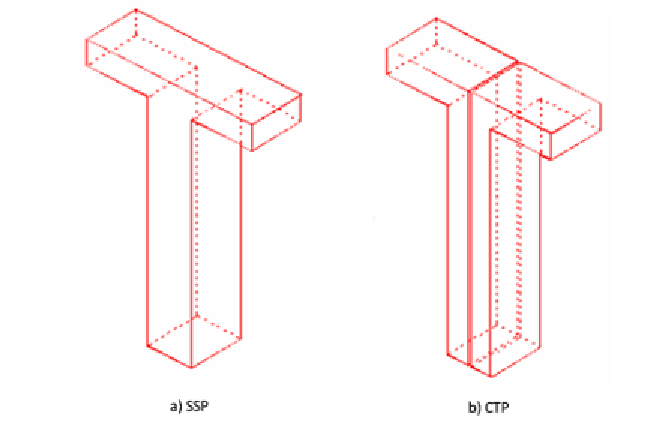Geology Reference
In-Depth Information
Figure 3. Conceptual design strategy for bridge pier in soil type I condition
Table 2. Seismic demands of the upgraded bridge for soil type I condition
Pier No.
Pier type
Bending stiffness
(×10
3
kN/m)
Disp. (m)
Shear stress (MPa)
Normal stress (MPa)
1
STP
521.0
0.022
4.340
4.070
2
STP
52.60
0.044
0.910
1.100
3
CTP
4.170
0.066
0.210
2.460
4
HSP
3.170
0.065
0.066
4.850
5
HSP
2.800
0.063
0.065
4.030
6
HSP
2.490
0.060
0.080
4.410
7
HSP
2.800
0.059
0.063
3.760
8
CTP
3.450
0.058
0.270
2.740
9
CTP
61.30
0.056
0.200
2.310
10
CTP
16.00
0.054
0.370
4.110
Conceptual Seismic Design
Strategies for Soil Type III
of China, 1989). Specially, the seismic demand
variations along these piers decrease and this
conceptual design strategy specifically makes the
seismic demands more uniform and rational along
the structural components and enhances the seis-
mic performance in the transverse direction ef-
ficiently.
Compared with the soil Type I, the specific pe-
riod
T
g
=
0 4. s
for soil Type III is relatively large.
It is obvious that the large deformation becomes
the critical problem for long span bridges in this
soil type. So the above proposed upgrading mea-
sures for soil Type I would not be applicable.










































































































Search WWH ::

Custom Search